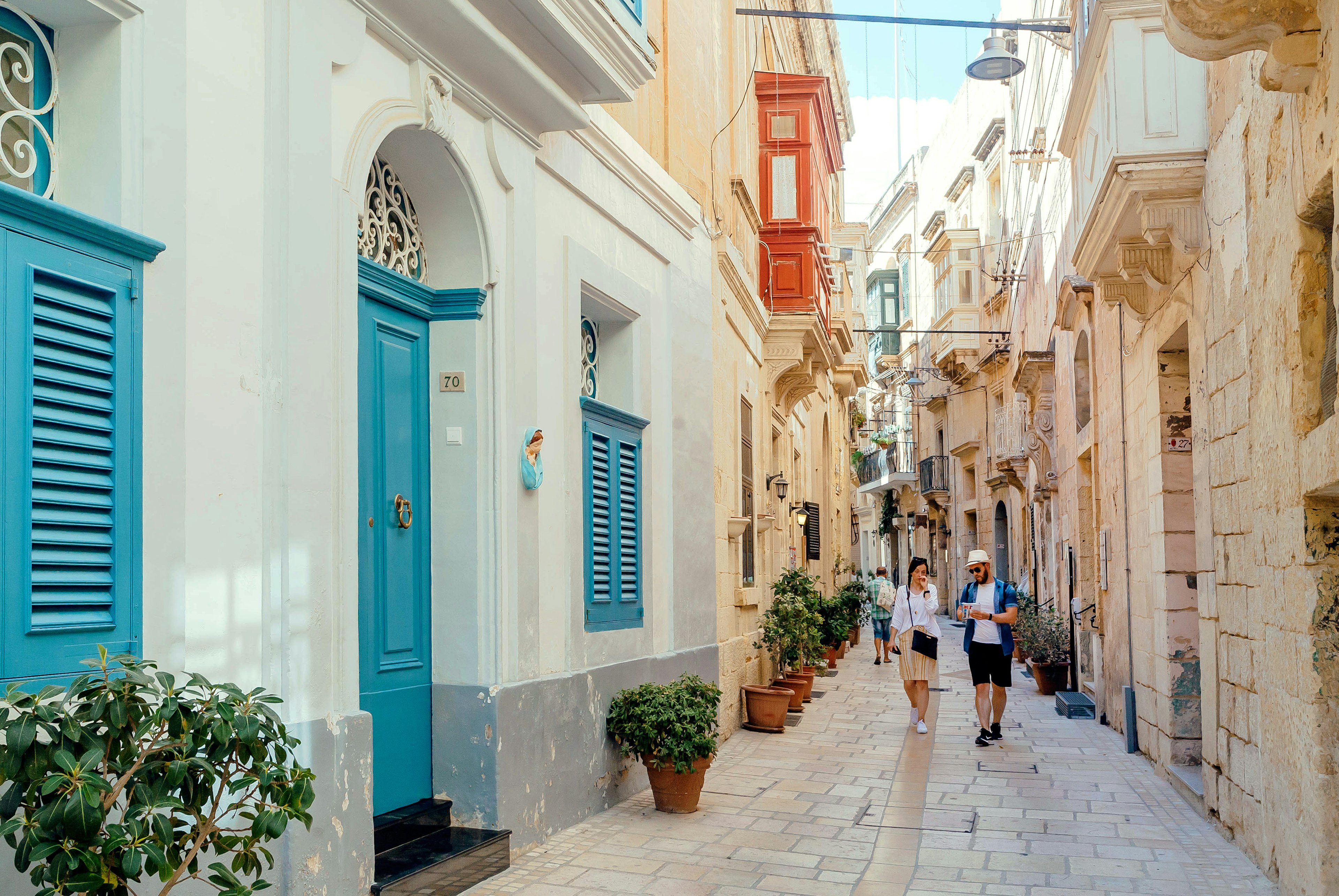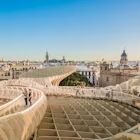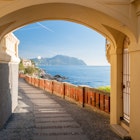
How to get around Malta, the small island that delivers big experiences
Aug 28, 2024 • 8 min read

Crossing the Grand Harbour by dghajsa water taxi is one of Malta's most memorable journeys. CaronB/Getty Images
A history-soaked archipelago set at the heart of the Mediterranean, Malta is easy to explore, and there's plenty to see and do. Malta and Gozo are the two main islands, with good public transport systems, while tiny Comino can only be explored on foot.
Take advantage of a convenient network of buses and ferries, set out on journeys of discovery in a well-priced rental car, or ride an e-bike or electric scooter along the spectacular waterfront esplanades of St Julian’s and Sliema. Here's our guide to the best ways to get around Malta.

Ride the bus to (most) parts of Malta and Gozo
Both Malta and its sister island of Gozo are compact and bus services operated by Malta Public Transport are a convenient way to explore. On Malta, routes begin from the bus station in Valletta, just south of the City Gate, while on Gozo, the town of Victoria is the central focus. Tiny Comino is usually visited on organized day trips by ferry from Gozo or Malta and it's small enough to walk around.
The frequency of buses ranges from every ten minutes to hourly services on less busy routes. However, the lack of punctuality can be a challenge, and afternoon and evening buses often run late. Buses are best used for focused day trips to places such as Mdina and Marsaxlokk.
Because most routes originate in the central hubs of Valletta and Victoria, using buses to visit several destinations in a single day can be problematic. Check Malta Public Transport's online journey planner or the Tallinja App for bus schedules and timings.
Another option for bus travel in Malta is catching a vintage bus from the Valletta Bus Station to popular destinations including Rabat and Mdina, and the popular Sunday morning seafood market at Marsaxlokk. Most of the lovingly restored buses date back to the 1950s and 1960s – see Vintage Bus Tours for details of departures.

Tickets for public transport in Malta
Single tickets including a two-hour transfer window cost €2.50 and can be bought on board buses. There’s also the option of a 12-journey card for €21, which can be used concurrently by couples or families. Offering unlimited bus travel for seven days, Explore Cards cost €25, while ExploreFlex rechargeable stored-value cards come in several variations and include discounted travel on buses and travel to Gozo on the passenger ferry.
Another variation is an ExplorePlus card for €72 incorporating seven days of travel on all buses, a hop-on, hop-off bus tour for one day, a harbor cruise, and a return journey on the passenger ferry linking Valletta and Gozo. For long-term stays in Malta, it’s worth signing up for a stored-value Tallinja Card. There is a registration fee, but it offers the best discounts on buses and Valletta ferry services, and also integrates with the Tallinja App.
There is a convenient Malta Public Transport booth in the airport’s Arrivals terminal. Ask them for their advice on the best transport card to buy for your visit.

Spectacular passenger ferries connect Valletta to nearby cities
Valletta Ferry Services runs several useful passenger ferries. From the southern edge of Valletta's fortified peninsula, ferries cross the Grand Harbour to the Three Cities (Vittoriosa, Senglea and Cospicua). A second service runs from Marsamxett Harbour on the northern edge of Valletta to the commercial district of Sliema. Ferries depart regularly from 7am to 7pm daily from October to May, with extra services running till around midnight from June to September. Bikes are transported for free.
Another option for crossing from Valletta to the Three Cities is by dgħajsa – Malta's traditional hand-rowed water taxis were first launched in the 17th century, and boatmen charge €2 for a one-way crossing. Passing under the golden, honey-colored walls of Fort St Angelo, this atmospheric means of transport is a brilliant way to cross Grand Harbour.
Explore off the beaten path with a rental car
Many remote beaches and smaller towns and villages on both Malta and Gozo are not serviced by bus, so having your own vehicle is recommended. Note, however, that traffic in Malta can get very busy, especially in the built-up area around Valletta, Sliema and St Julians, and parking can be difficult to find.
Driving and looking for somewhere to park in the narrow heritage streets of Valletta is not recommended. Park up before exploring Valletta on foot; there's a Park & Ride facility just south of Floriana, from where free shuttle buses run to Valletta's City Gate.
Car rental rates in Malta are amongst the lowest in Europe, especially if you use locally owned companies such as Billy's Car Hire on Malta and Mayjo Car Rentals on Gozo. Book ahead on both islands during the busy months of July and August, and select a compact car to negotiate roads that are likely to be much narrower than you're used to. Be patient and courteous while driving and yield (give way) to oncoming traffic on narrow roads and in smaller villages.

Cross from Malta to Gozo and Comino by ferry
Shuttling between the northern Maltese port of Ċirkewwa and Mġarr Harbour on Gozo, Gozo Channel's vehicle and passenger ferry takes around 30 minutes to cross between the two islands. Services run every 45 minutes from 6am to 6pm, and approximately every hour through the night, but the service is sometimes suspended in winter because of storms and rough seas. If you're leaving from Ċirkewwa with a vehicle, you'll only pay before the return journey coming back from Gozo.
While car rental rates are often cheaper on Gozo, any savings may be offset by the costs of the ferry, so it's worth weighing up the total costs of car rental and the ferry if you're visiting both islands. Avoid public holidays and summer weekends when locals travel to Gozo and queues to board can be long and slow-moving.
Gozo Highspeed provides a convenient passenger-only ferry linking Mġarr Harbour on Gozo to Valletta. Journeys take 45 minutes and you can take bicycles on board; just book ahead for one of the limited number of bicycle spaces, either in person or on the website. This service is a good option if you plan to pick up a rental car at Mġarr Harbour or explore Gozo by bike, e-bike or scooter.
During the summer, passenger-only ferries from Malta to Comino are run by Comino Ferries. There are crossings every half hour from Marfa and Ċirkewwa to the Blue Lagoon, and the trip takes 20 minutes. Services from Gozo's Mġarr Harbour are run by Comino Ferries and Ebsons Comino Ferries.

Bike shares and electric scooters are good for low-carbon travel
A good option for harborfront exploration around St Julian's and Sliema is the Tallinja Bike bike-sharing scheme, with 11 docking stations on Malta and three on Gozo. Locations include the ferry terminals and the Valletta Bus Station. Single rides cost €3, and there's a discount for Tallinja Card holders. For short hops on an electric scooter, download Whizascoot’s app and get riding. Note that bikes and e-scooters are not allowed on the pedestrian-only oceanfront promenade running from Sliema to St Julian's.
Longer-term bike or scooter rental is handy for more ambitious exploring, especially on Gozo's quieter roads. Along with jeeps, quad bikes and 4WD buggies, scooters, pedal cycles and e-bikes can be rented from Mġarr Tourist Services, conveniently based at Gozo's Mġarr Harbour. Note that there have been several serious quad-bike accidents on Gozo in recent years, so be extra careful when riding along elevated sections and through coastal areas.
Based at the northern Maltese beach resort of Bugibba, EcoSports rents out bikes and e-bikes and runs guided bike tours. For a fee, they’ll drop off bikes to wherever you are staying in Malta. Based at Marsalforn on Gozo, On 2 Wheels hire bikes and e-bikes, perfect for making the short ride west to see the coastal salt pans at Xwejni Bay.
Get walking to explore Malta's historic cities
Malta is a wonderful destination to explore under your own steam, especially the heritage streets of Valletta, the walled hilltop city of Mdina, and the astounding Il-Kastell citadel in the Gozitan capital of Victoria. For longer walks, many scenic walking trails follow the dramatic coastlines of both Malta and Gozo.

Taxis and rideshare services are handy for city exploring
Cabs are useful for city exploring. Conventional taxis can be booked with eCabs, either online, by phone or on their app, while app-based rideshare services are provided by Bolt and Uber. Most rideshare drivers work around high-traffic and high-population areas including Sliema and St Julian's.
Accessible travel in Malta
All Maltese buses have a low floor to accommodate wheelchairs and are equipped with a wheelchair ramp and step-free entry. Ferries operating on Valletta Ferry Services’ two harbor routes and Gozo Highspeed also offer access for wheelchair users.
Note that the steep and often stepped streets of Valletta can be difficult to negotiate for travelers with restricted mobility, but key galleries and attractions such as the National War Museum at Fort St Elmo, and the National Museum of Archaeology offer ramps and wheelchair access. Heritage Malta lists accessible sites on their website.
Why I love Valletta’s harbor ferries
Crossing Grand Harbour by ferry is one of the world’s greatest urban commutes, leaving behind Valletta’s improbably compact fortified peninsula to approach the towering ramparts of Fort St Angelo and the Three Cities. Tiny dgħajsa water taxis berth next to leviathan super yachts, and narrow laneways arc away from the shelter of Dockyard Creek to reveal the quiet residential backstreets of Birgu.
Explore related stories





 Art and CultureVisiting Malta? Here’s what to know, how to drive, where to eat and more
Art and CultureVisiting Malta? Here’s what to know, how to drive, where to eat and moreSep 2, 2024 • 6 min read




